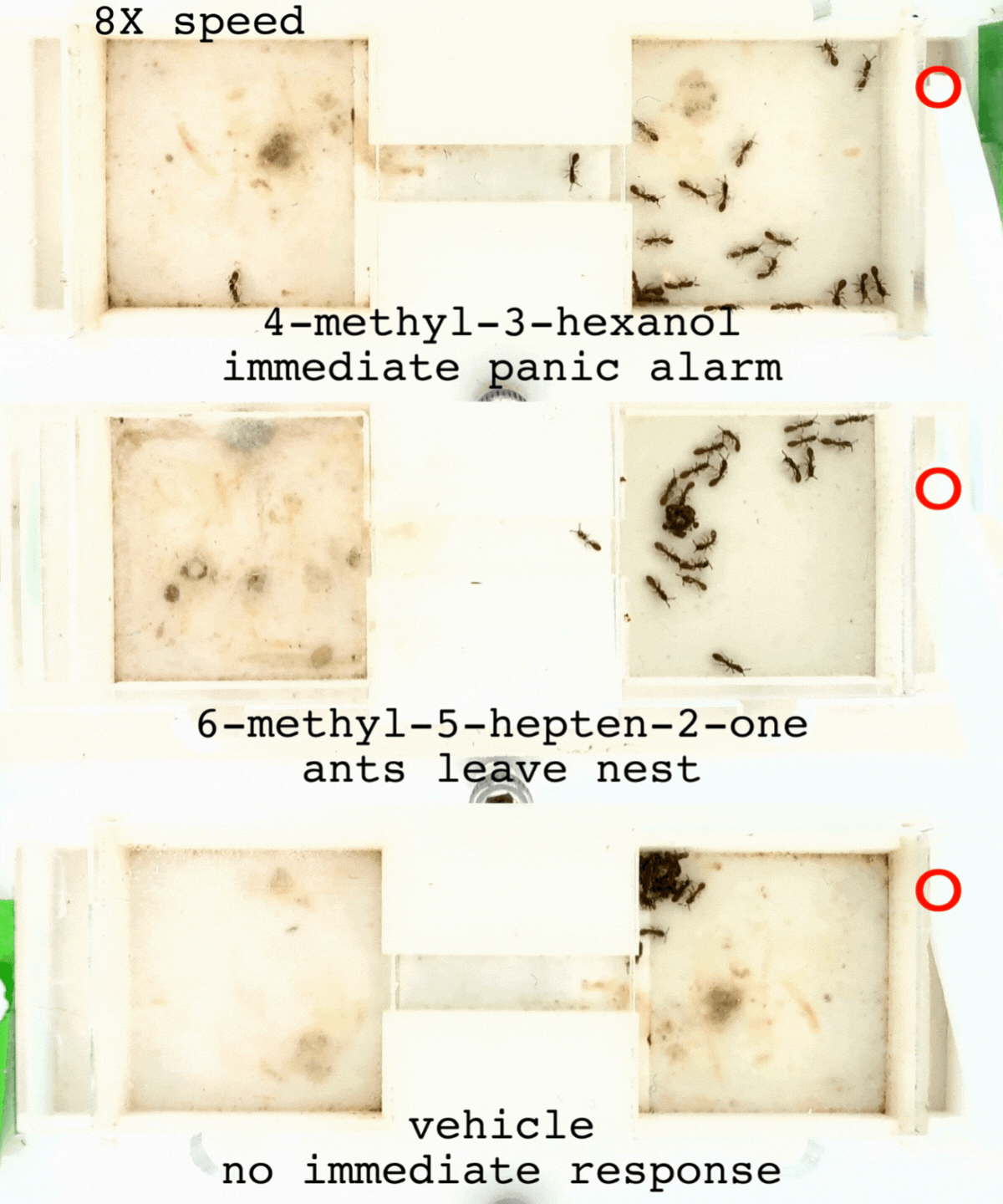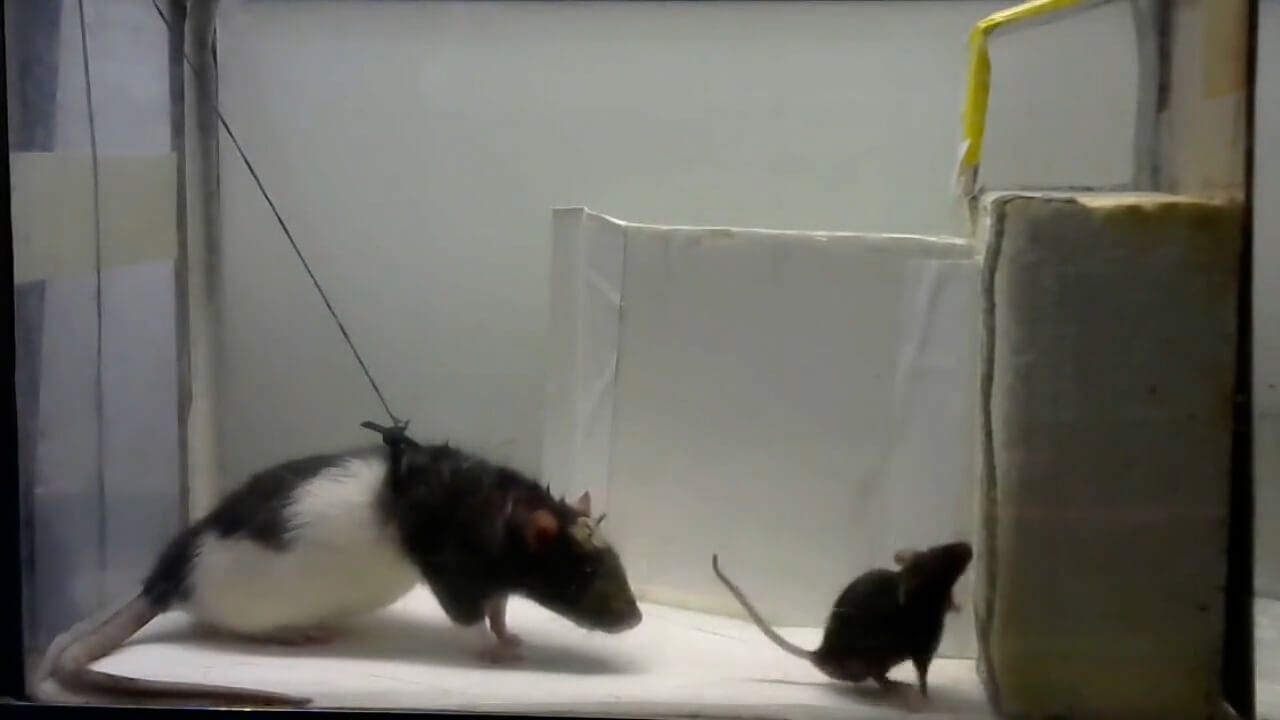10 Terrible NIMH-Funded Animal Experiments—and How You Can Help End Them
The National Institute of Mental Health (NIMH) has shocked, brain-damaged, and cut open animals in pointless experiments since it was founded in 1949.
Now, 75 years later, the leading U.S. agency for mental health research is still ignoring facts, funding fiction, and funneling billions of your tax dollars into violent and deadly experiments on animals that won’t produce viable treatments for humans.
These are the facts:
- One in five U.S. adults suffer from mental illness.
- NIMH’s own published studies confirm that animals aren’t good models for human health conditions.
- New drugs that test safe and effective in animals fail in human clinical trials about 95% of the time.
But NIMH’s taxpayer-funded gravy train keeps chugging along, flushing billions of dollars and inflicting violence on animals in experiments as useful as a glass hammer.
PETA’s list of 10 examples merely scrapes the scum on the swamp of suffering NIMH is currently funding:
- ‘Schizophrenic’ Baby Monkeys at the University of California–Davis
Experimenters at the University of California–Davis induce schizophrenia- and autism-like symptoms in baby monkeys by injecting their pregnant mothers with compounds that make them ill. Once the sick mothers give birth, experimenters tear their babies away from them and force the infants to complete a range of “fear tests.” When they reach just 3 years of age, experimenters kill them and dissect their brains. NIMH paid more than $1 million for this torture in 2023 alone.
- Glowing Ants at Rockefeller University

How do ants warn each other of danger nearby? NIMH paid experimenters at Rockefeller University more than $1 million to find out. They breed ants who glow in certain parts of their nervous system, release odors that alert them to danger, and watch them flee, recording which parts of their nervous systems glow in response. In other experiments, the tiny ants’ heads are restrained, imaging equipment is inserted into their brains, and experimenters present them with different odors to see how they react. How is this relevant to human mental health? Your guess is as good as ours.
- Inflicting Panic Attacks on Mice at the University of California–Los Angeles
Experimenters at the University of California–Los Angeles cut open the skulls of mice and implant manipulating devices into their brains. Then they trap them in cages with electrified floors that shock their feet or in a cage with a much larger rat to induce panic, watching how their brains activate as they try to escape. In some tests, experimenters implant devices that activate the panic areas of the brain, so the animals are terrified even without a threat. NIMH has funneled more than $2 million into this horror.

- The University of California–Berkeley’s Barbaric Experiments on Bats
At the University of California–Berkeley, experimenters cut open the skulls of tiny Egyptian fruit bats and implant electrodes and other stimulation devices into their brains. They then monitor the animals’ brain activity as they communicate with each other in the dark. The relevance of such crude cruelty to human mental illness is impossible to establish, yet NIMH has handed over more than $1 million to keep this project’s lights on.
- New York University’s Mouse-Fight Club
Experimenters at the New York University Grossman School of Medicine implant electrodes into the brains of mice, then sit back and watch as the larger ones beat up the smaller ones. NIMH has funded this fight club with more than $1 million.
- Yale University: Watching Monkeys Look at Each Other
At Yale University, experimenters surgically implant electrodes into monkeys’ brains and then study which areas activate when the animals look at other monkeys. That’s it. That’s the whole thing. This sorry excuse for science has so far received close to $4 million from NIMH.
- Sleep-Deprived Prairie Voles
Experimenters at Oregon Health & Science University and the University of Michigan prevent young prairie voles from sleeping in order to see how that affects their social behavior. They wake the animals up by shaking their cages multiple times—terrifying them throughout the night—and then subject them to cruel foot-shock tests, offer them alcohol to see how they respond, and record other social behavior. This purportedly sheds light on autism, a human disorder that prairie voles don’t experience. Yet NIMH has given more than $2 million to fund these experiments.
- Aggression in Mice at the University of Utah
Experimenters at the University of Utah purposely breed mice to be aggressive. Then they tear them away from their loving mothers, inject them with chemicals, and scare them with loud sounds before observing the traumatized animals’ aggression toward each other. NIMH has already funneled more than $3.7 million into this nonsense.
- Washington University’s Desperate Monkeys
Purportedly to study risk-taking behavior in humans, experimenters at Washington University drill holes into the skulls of monkeys and implant electrodes into their brains. Then they deprive the animals of water and force them to complete tasks in exchange for a single drop of juice, monitoring which parts of the brain activate when the monkeys engage in behavior that’s more or less likely to be rewarded. NIMH has so far paid the school more than $2 million for this cruelty.
- Virtual Reality Mouse Torment at Northwestern University
Experimenters at Northwestern University use virtual reality (VR) technology to induce terror in sensitive mice. They force the animals to wear specially contrived goggles, inject chemicals into their brains, attach plates to their skulls, and force them to run on a treadmill while a VR simulation of an owl chasing them plays through the goggles. Experimenters measure the mice’s movement and, in some cases, remove their eyes to measure their retinas. The cost to taxpayers so far? Close to $5 million. Thanks, NIMH.

More Noteworthy Nonsense
NIMH is a seemingly bottomless pit of cruel, deadly, and wasteful experiments on animals. A few more of its tax-funded terrors bear mentioning:
- Yale University experimenters are getting paid more than $800,000 to inject monkeys with compounds that cause them to become stressed and agitated before forcing them to complete memory tests.
- Brown University experimenters have received more than $2 million to implant electrodes into monkeys’ brains and examine their brain cells.
- Boston University experimenters have been paid nearly $4 million to inject chemicals into monkeys’ brains, which they dissect after killing the animals.
- NIMH’s own experiments on fruit fly behavior have netted nearly $25 million.
- California Institute of Technology experimenters have been given more than $3 million to study human autism in the very nonhuman zebra fish.
- NIMH gave Vanderbilt University experimenters more than $2 million to implant electrodes into young monkeys’ brains and test their memory.
What You Can Do
These experiments cost taxpayers tens of millions of dollars each year, torment and kill dozens of animals, and rob mental health researchers of the resources they need to pursue superior, animal-free methods that could actually produce effective treatments for people who desperately need them.
Please urge NIMH to redirect resources away from ineffective experiments on animals and toward modern, human-relevant research methods instead:
From PETA and executive producer Bill Maher, the new docuseries ‘The Failed Experiment’ exposes what most people don’t know about experiments on animals.

